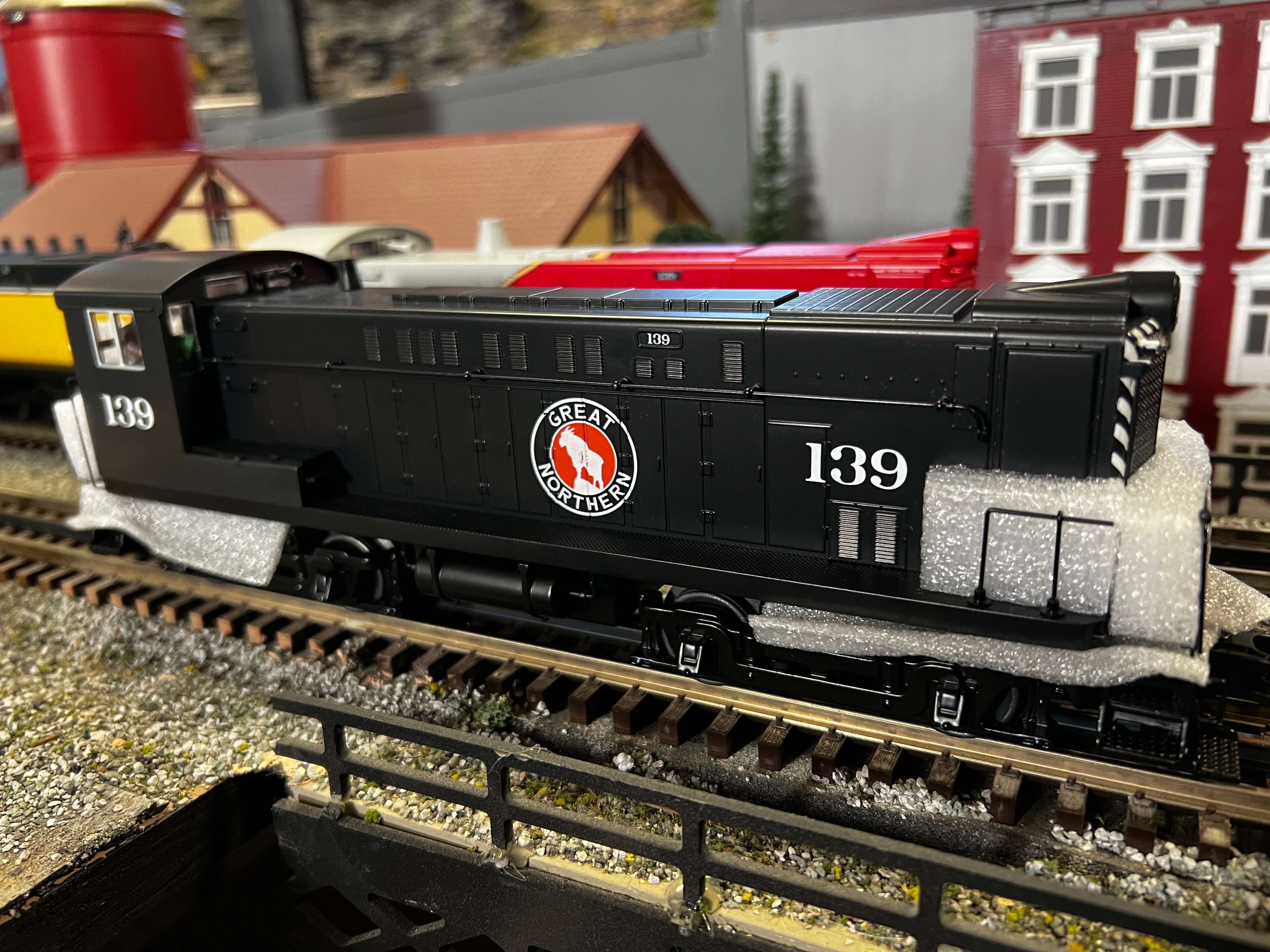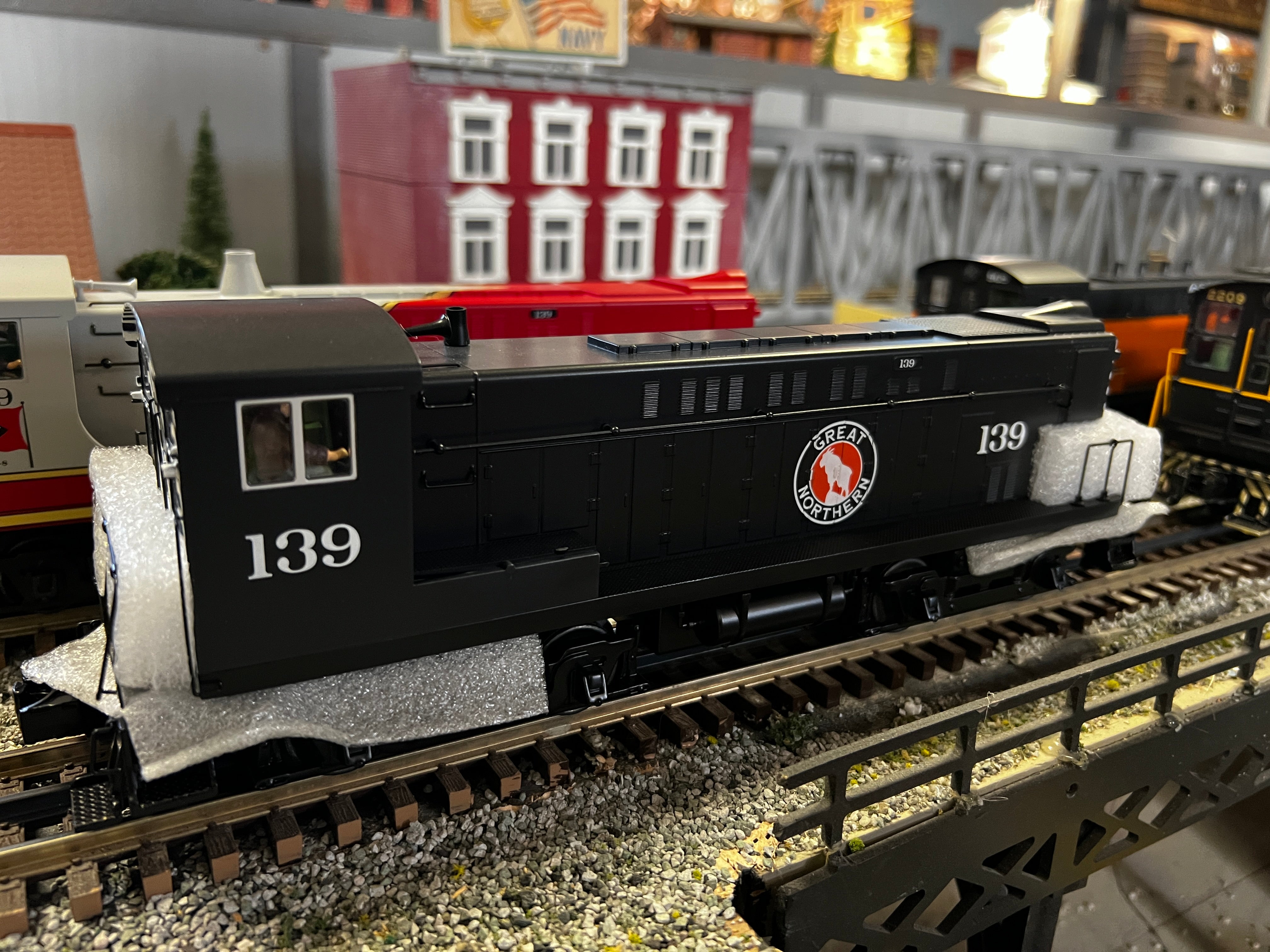Love it? Add to your wishlist
Your favorites, all in one place. Shop quickly and easily with the wishlist feature!
[message]
[title]
[message]





Announcement Date:
Guaranteed Pre-Order Due Date:
Expected Delivery Date:
Individually Boxed:
| Announced Date: | April 2022 |
| Released Date: | May 2023 |
| Individually Boxed: | Yes |
The Baldwin Locomotive Works had been building steam engines for a century before it sold its first production diesel in 1937. While most of Baldwin’s diesels were ultimately disappointments to its customers, the engines’ unique looks won the hearts of American railfans and modelers. Nothing else on rails looked like the baby-faced 24-wheeled Centipedes or the Raymond Loewy-styled Sharknoses. The distinctive VO-1000, perhaps the most muscular looking of all first-generation diesel switchers, was Baldwin’s most successful product. The U.S. military and over 30 class one railroads bought 548 copies of the 1000 hp. engine between 1939 and 1946.
All Baldwin diesels were powered by variations of the same De La Vergne diesel motor. Acquired by Baldwin in 1931, the De La Vergne Engine Company had started life in 1880 making mechanical refrigeration machines for breweries. Its power plant for Baldwin’s locomotives was unique among diesels of its time. In order to make the fuel burn slower and give their 4-cycle engine a longer power stroke, De La Vergne’s designers used massive cylinders more than a foot in diameter and added a separate combustion chamber above each cylinder. To allow the fuel more time to burn, they ran the engine at a maximum speed of 625 rpm — just over half the speed of most competitive diesels. In the October 1936 issue of Baldwin Locomotives Magazine, the company claimed that “slow combustion gives low fuel consumption, absence of smoke, quick pick-up, and smooth idling.”
Ultimately the massive De La Vergne motor proved to be both a blessing and a curse. Teamed up with equally heavy-duty traction motors supplied by Westinghouse, Baldwin’s prime mover found its niche in low-speed lugging assignments, which it handled relatively well. But those were just the types of assignments in which crews tended to abuse equipment and push an engine to its limits. As a result, Baldwin engines eventually developed a reputation for high maintenance costs. The VO-1000 switcher, with its normally aspirated 8-cylinder engine, was actually one of Baldwin’s most dependable locomotives, and many served for decades. The turbocharged models that succeeded the VO-1000, however, were plagued with problems that included excessive piston wear. By 1956 it was clear that Baldwin was no longer a contender in the diesel business, and the nation’s oldest locomotive builder threw in the towel.
177 W Main St
Atlanta, IN 46031
765-292-2022
support@mrmuffinstrains.com
Sign up for our newsletter and be the first to know about coupons and special promotions.
© 2025, MrMuffin'sTrains Powered by Shopify
